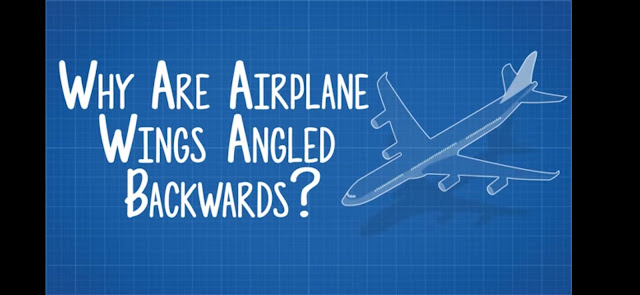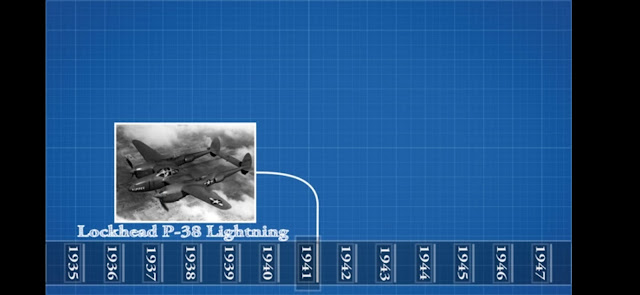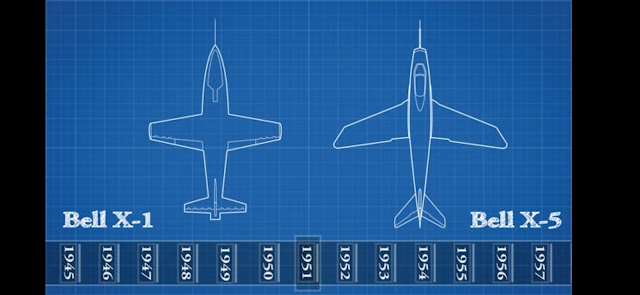Why plane wings are backwards..?
Today most aircraft have a swept wing
Design and it helps the aircraft to fly
Fast but it wasn't always like this
Let's look back in time and learn how
This technique was developed and what
We learned this process in 1941
Most aircraft were designed
Straight Wing and Lockheed P-38
The power was not directly isolated
Wing design works well at low speeds
But the p38 was not a slow aircraft and its
Engineers quickly discovered that
The aircraft had high control issues
Speed Dives A on 5 November 1941
Lockheed test pilot named Ralph
Burton died when he lost control.
The aircraft underwent a major investigation, led by an engineer named John Stack, in which he employed a special type of photography, called the Scholarin
Photography to observe air flow in a
High speed wind tunnel and what is it
They saw the wind pass over the wing
Air on top of airfill
This increases in how the wing generates. This means that a wing traveling less than the speed of sound can actually develop regions of local flow that travel faster than the speed of sound Doing and shock waves arrive at these places.
Reduce lift and increase drag
The speed at which the shock waves
Called an important mach number to begin with and reached Ralph Verdun
Speed during your high speed test dive
So why did the accident happen
The speed of their aircraft increased the flow of air from the surface of the wings even further, as this different flow, separated by a shock wave formation, actually increased lift on the tail wing and combined with reduced lift on this wing. Due to p38 one also entered. Deep dive which was many It was difficult to avoid John Stack. In 1943 this problem was solved by placing a special flap under the wing, where the flow was not affected by waves, it could be deployed during flap dives and to maintain proper pitch control of the wing. But will increase the lift. John continued his work in the development of supersonic flight over the next decade and was a major driving force for the development of the Bell-1.
The first human vehicle to brake was
Through sound barrier in 1947
The bell was an X-1 rocket propelled aircraft and
Its fuselage was built after 50
Caliber rounds that were known to be stationary in supersonic flight had its engineers a significantly thinner wing and P-38's pitch control issues by increasing air flow from the tail wing upward and downward to the aircraft's critical Mach number. Enhanced. Wing But this plane still had a straight wing, which the Swept Wing believed could hold the key to high-speed flights, which came at the end of World War II in 1951, with Balik V released and as The design was mostly based on a capture German
The Prototype X5 had the special ability to change its sweep angle during flight, making it the perfect test subject to examine the aerodynamic benefits of the swept wing, let's directly compare the aerodynamics of the
The wing bell x-1 and the balik's v as it increases its sweep angle air will flow parallel to the air cord on a straight wing only it is called a cord wise flow which accelerates the air and creates lift As stated earlier this is the acceleration that decreases. The critical Mach number of the plane now sees the flow at Bell x5 as it increases its sweep angle. Introduces new components that flow moves along the length of the wing and it does not
Fast and thus does not affect
By changing some important Mach numbers
Period-wise flow of airflow
The wind acceleration on the wire is reduced which means the game can fly.
Before the strong waves start forming
On the wing as the aircraft increased
Pilot can increase speed
Doing this changed a large amount of air into span-wise flow and thus increased the critical Mach number even further, proving that the swept wing design could delay the construction of shock waves and thereby Sort of allows planes to fly so fast next time 'fly again
Look out the window and admire
Early 20th century engineer
His designs have allowed us to travel
Worldwide transonic motion and
Hopefully soon regular citizens can break through the sound barrier


















0 comments:
Post a Comment